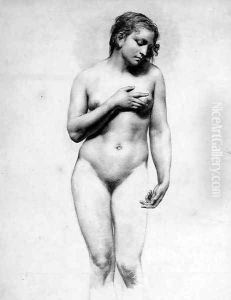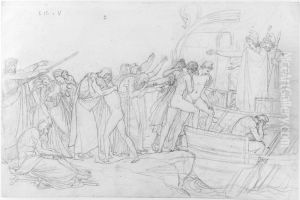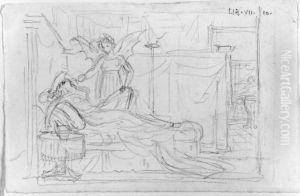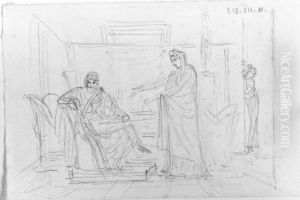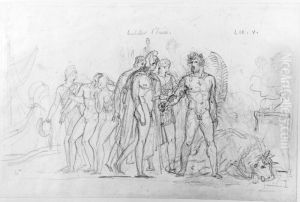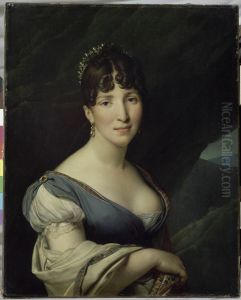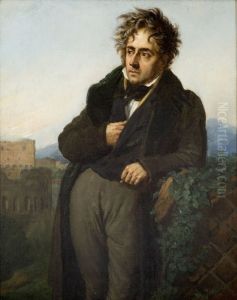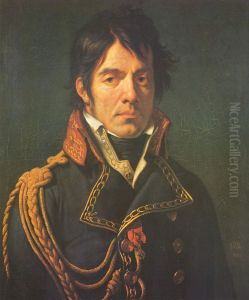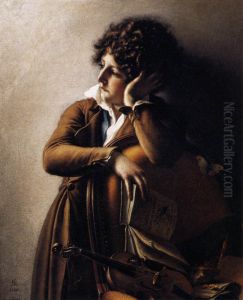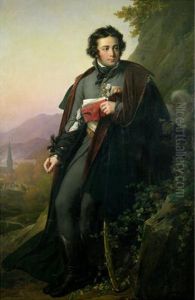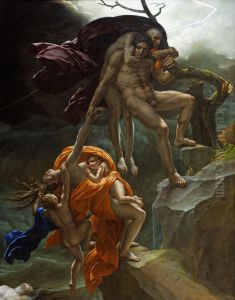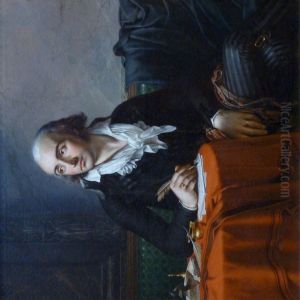Anne-Louis Girodet De Roussy-Trioson Paintings
Anne-Louis Girodet de Roussy-Trioson, known as Girodet, was a French painter born on January 29, 1767, in Montargis, France. He was a student of the famous neoclassical painter Jacques-Louis David and is known for blending elements of neoclassicism with early Romanticism. Girodet's work is characterized by its sharp precision, sensuality, and often includes an element of the exotic or the sublime, distinguishing him from his contemporaries.
Girodet won the Prix de Rome in 1789, which allowed him to study in Italy at the French Academy in Rome. This was a turning point in his artistic career, as he was exposed to the works of Renaissance masters and the ancient art that would greatly influence his style. During his stay in Italy from 1789 to 1793, he developed a more personal style that began to diverge from the strict neoclassical principles of his teacher, David.
After returning to France, Girodet achieved success with works such as 'The Sleep of Endymion' (1791), which displayed his ability to combine poetic and mythological subjects with sensuality and dream-like quality. In 1798, he produced one of his most famous works, 'Ossian Receiving the Ghosts of French Heroes,' which reflected the influence of early Romanticism with its evocative portrayal of the bard Ossian from Celtic mythology, surrounded by ghosts.
Throughout the early 19th century, Girodet continued to receive commissions, including a series of portraits and historical paintings. Notable among these is 'The Revolt of Cairo' (1810), which illustrates Napoleon's campaign in Egypt, showcasing Girodet's talent for drama and complex composition.
Girodet also ventured into literature, writing a series of satirical poems and essays. His literary work was noted for its wit and acerbic criticism of his contemporaries, including his former teacher, David.
Girodet's later years were marked by a withdrawal from public life. He continued to paint and be involved in the arts, but his health declined. He passed away on December 9, 1824, in Paris. After his death, his reputation continued to grow, and today, Girodet is recognized as a key figure in the transition from neoclassicism to Romanticism in French painting. His works can be found in museums around the world, celebrated for their innovative approach to classical subjects and their anticipation of Romantic themes.
